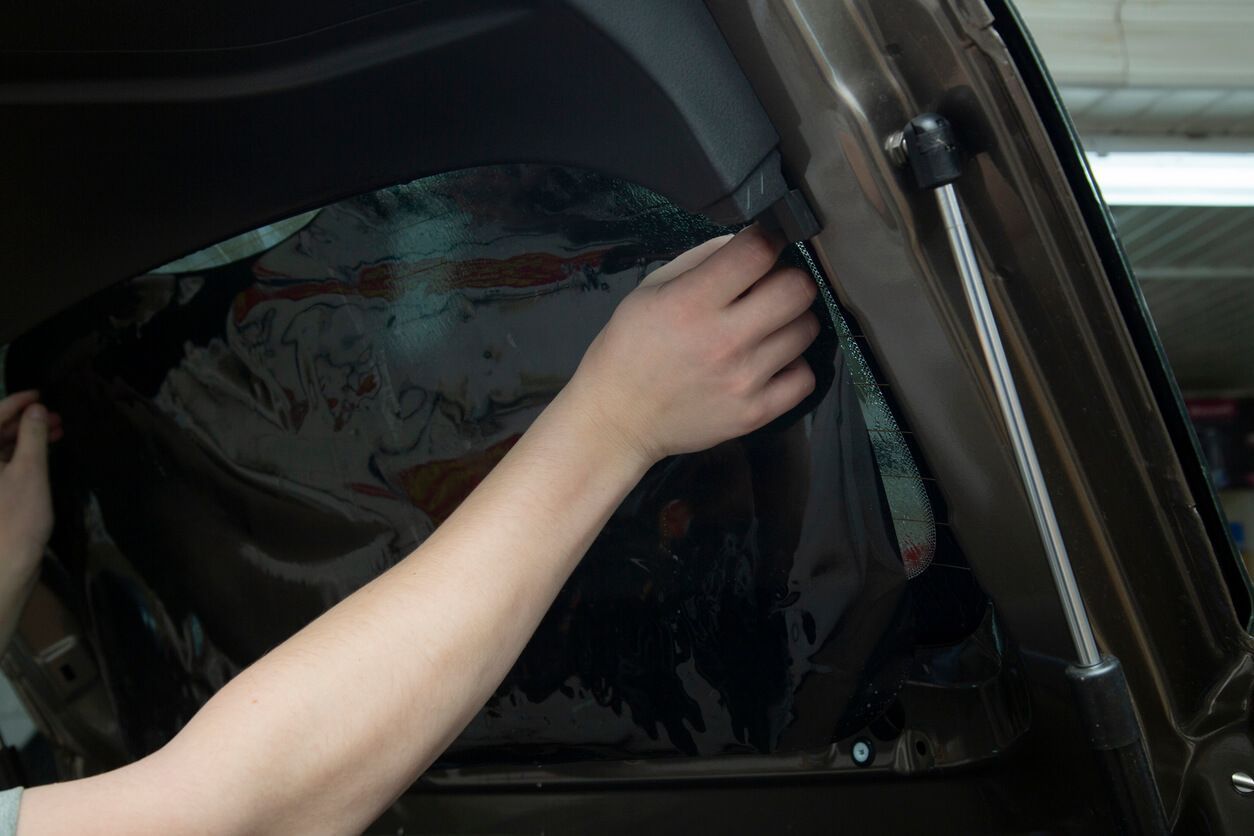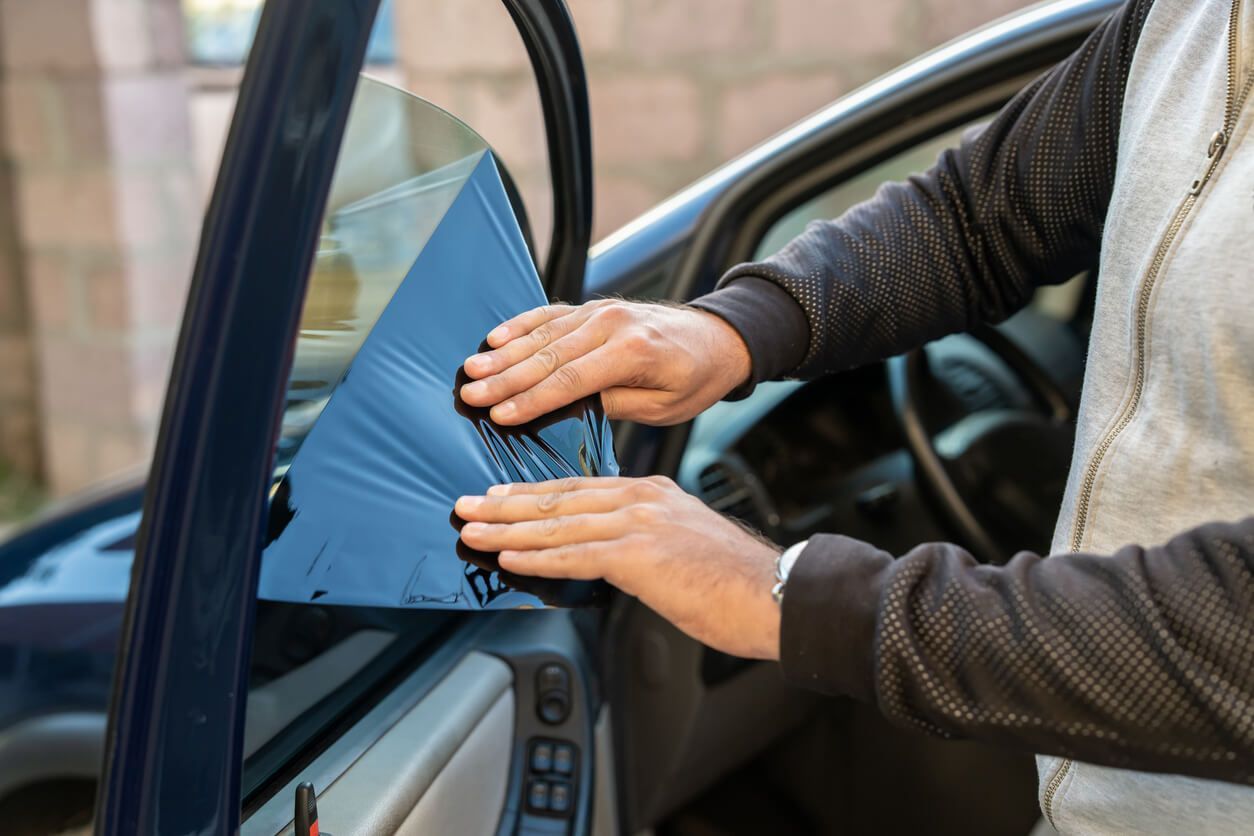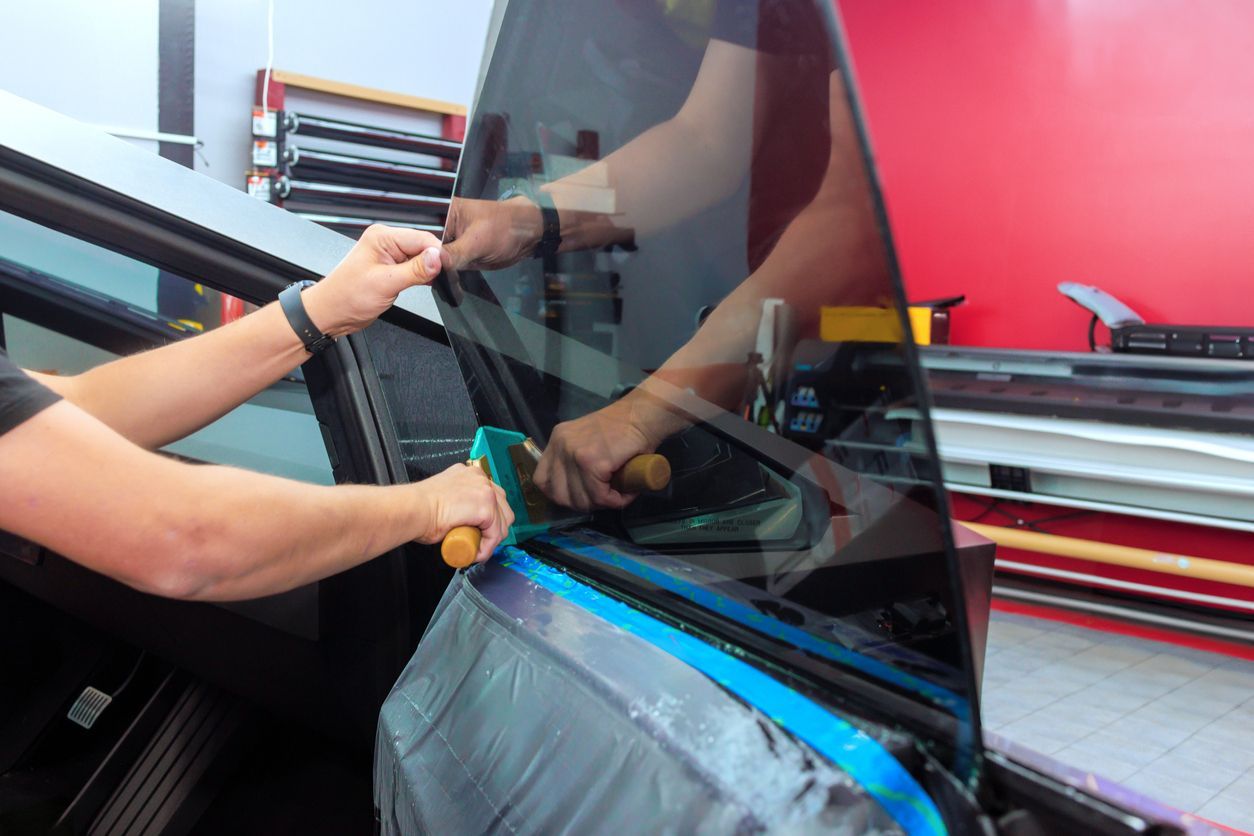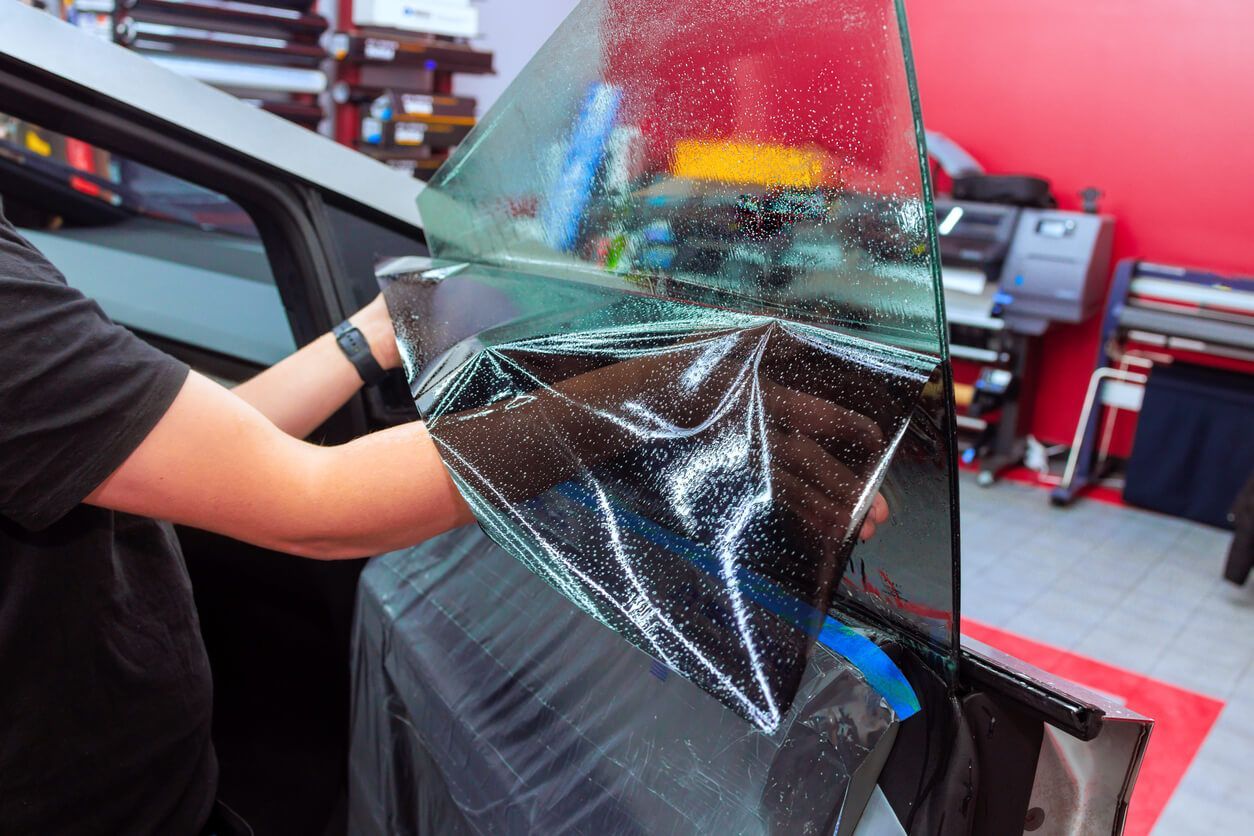When Can You Finally Roll Down Your Window After Tinting?

Window tinting is not just an aesthetic enhancement; it’s a functional upgrade for homes, offices, and vehicles alike. Whether it blocks harmful UV rays, improves privacy, or just adds a sleek look to glass surfaces, tinting offers a multitude of benefits.
But with this upgrade, you may think, "Just got the windows tinted; when can I roll them down?" Hold on a moment! While it’s tempting to immediately enjoy the fruits of your latest upgrade, understanding the right time to roll down your newly tinted windows is crucial.
This article will help you manage this waiting period with ease, helping your new tints settle flawlessly and last for years to come.
Let's explore how long to wait and why it matters so that you can enjoy your tint without any hassle.
What Happens If You Roll Down Windows Too Early After Tint?
If you roll newly tinted windows down too soon, it may start:
- Peeling: Rolling down your windows prematurely can interrupt the curing process, causing the window film to lift from the glass. This not only looks unappealing but can lead the entire tint job to fail, requiring a visit back to the tint shop for a fix.
- Bubbling: Early movement of the windows can trap air under the film, forming air bubbles that are not only unsightly but hard to remove, potentially blocking your view.
- Crinkling: If the window film isn’t given time to secure its adhesive layer, adjusting your windows too soon can wrinkle the tint. This can damage the smooth appearance of your tinted windows.
- Adhesive Failure: Each type of film used requires its own time to activate the adhesive securely. Ignoring this can lead to adhesive failure, where the film doesn't stick, turning your investment into frustration.
- Increased Costs: Early interference with the drying process often translates to extra costs. You could find yourself paying more for readjustments or a complete re-application if the initial window tint film lays improperly.
- Dirt and Debris: Pulling down windows too early can cause them to catch dirt and debris, which could stick to the new adhesive, ruining the pristine look of the new tinting work.
- Warranty Issues: Many tint guarantees don't cover the issues caused by incorrect post-tint care. So, mishandling your newly tinted car could mean missing out on warranty benefits.
When Can I Roll Down the Window After Tint?
The timeframes for rolling down your windows after tinting can vary based on several factors. Generally speaking, it’s safe to roll down your windows only once the tint has fully cured, which usually takes about three to four days. Giving ample time allows the film to fully adhere to the glass, helping maintain your tint in perfect condition.
Factors Affecting Tint-Drying Time
Weather Conditions
Weather conditions greatly influence the curing process for window tints. Direct sunlight and higher temperatures typically accelerate the drying time of the tint adhesive, allowing faster use of tinted windows. Conversely, colder temperatures can slow down the drying process, extending the time before windows can safely be rolled down. Adjustments to your wait time may be necessary based on the current weather to achieve optimal adhesion.
Type of Tint Film
Various types of window tints, such as ceramic window tints, solar tints, or decorative films, each have different chemical compositions and thicknesses. These differences require variations in the time needed for the tints to adhere to the window surfaces adequately. Factors such as the type of film used influence not only durability but also the curing duration. Consequently, it's crucial to understand the specifications of the tint applied to manage your expectations accurately.
Application Technique
The method used by your tint installer can significantly affect the setting time of the window film. Techniques like applying heat with a heat gun or using soapy water during application can impact how quickly the tint dries and adheres to the glass. These techniques help ensure the even distribution of the adhesive and the removal of air pockets, which can affect the overall durability and appearance of the tint job.
Window Usage
Frequent use of windows immediately after tinting can disrupt the adhesive curing process. It is recommended to minimize or avoid using the windows—specifically rolling them down—during the initial drying period. The film needs undisturbed time to bond correctly with the glass, and premature use can prolong this essential period of setting.
Ventilation
Proper ventilation is crucial in the space where the tinted vehicle is stored after the installation process. Good airflow helps maintain mild temperatures and low humidity levels around the vehicle, which can significantly boost the efficiency of the drying process. Making sure the garage or storage area is well-ventilated facilitates the evaporation of any residual moisture from the application. This promotes faster curing of the tint adhesive.
Humidity Levels
High humidity levels can greatly extend the time required for window tint adhesive to cure completely. In humid climates, the presence of excessive moisture in the air slows down the evaporation of the solvent base in the adhesive, prolonging its drying time.
Parking your vehicle in a controlled environment, like a garage with a dehumidifier, can help reduce humidity. This can mitigate the effects of moisture and speed up the overall curing process of your newly applied window tints.
What Are the Recommended Waiting Periods?
- Minimum Waiting Time: To avoid immediate potential damage, a minimum of 24-48 hours should be observed before rolling down tinted windows.
- Optimal Waiting Time: For most types of film and average weather conditions, a period of 3-5 days is recommended for complete curing.
- Extended Waiting Time: In colder or extremely humid climates, it might be wise to extend the window up time to a whole week to have the best results.
Why Should You Roll Down Your Windows at the Recommended Time?
Protection of Investment
By adhering to the recommended waiting time, you help ensure that the window tint film adheres properly without issues. Proper curing avoids peeling and detachment, saving you from potential re-application costs. Treating this period with care extends the life of your tint. This careful approach protects your tint investment and keeps your car looking great for longer.
Maintaining Aesthetic Appeal
Respecting the curing time necessary for your window tint will maintain its beautiful appearance. Early rolling down can cause unsightly bubbles and imperfections. A perfectly cured tint offers a clean, sleek look that enhances your vehicle’s overall aesthetics. By waiting the recommended period, your vehicle retains its visual appeal and style.
Warranty Compliance
Following the specific care instructions and waiting times can help maintain your tint’s warranty. Most tint shops provide warranties that require adherence to a post-tint care protocol. Rolling down your windows prematurely can void these warranties. Compliance with these guidelines is crucial for keeping your warranty valid.
Ensuring Operational Integrity
Waiting until the suggested time helps maintain the tint's operational integrity. Properly adhered window tints perform better in reducing UV exposure and managing interior temperatures. This waiting period helps the tint protect you and your vehicle’s interior from sun damage. Full adherence allows you to fully benefit from the tint's UV protection and heat reduction properties.
Preventing Mechanical Issues
Following the recommended waiting time can also prevent mechanical problems associated with early window usage. Using windows before the adhesive has settled might disrupt the tint placement near the window mechanics. Disruptions could lead to costly repairs of both the electric window mechanism and the tint itself. By patiently waiting, window mechanisms continue to operate smoothly without interfering with the freshly applied tint.
FAQs
Can I Roll My Windows Down 2 Days After Tint?
It’s better to wait a bit longer. Window tints typically need around three to four days to fully cure. Rolling down the windows sooner than this might compromise the adhesive layer, leading to potential damage. Safely operate your windows only after the recommended period to maintain the integrity of the tint.
How Do I Know When My Tint Is Cured?
A fully cured tint will present a uniform and smooth appearance. Look for the absence of bubbles or haze across the tinted surface. The window film should adhere tightly along the window edges without any detached sections. These signs indicate that your tint installation has successfully been set and cured.
How Long Do I Have to Leave Windows Up After Tint?
If you are contemplating, "When can I put my windows down after tint?" Generally, it is best to keep your windows closed for about 72 to 96 hours. This duration allows the tint ample time to adhere properly under normal weather conditions. If you're in a colder climate or the weather has been particularly humid, consider extending this period to achieve optimal results.
Can I Wash My Car 2 Days After Tint?
While washing your car 2 days post-tint is possible, it's crucial to avoid direct water contact with the newly tinted windows. Direct spray can disturb the curing process and loosen the adhesive. For the best outcome, focus on other areas of your vehicle and use gentle cleaning methods near the tinted windows.
Looking for Expert Tinting Services? Premier Window Tinting Is Here for You!
Following the correct waiting period after having your windows tinted ensures you avoid any unnecessary repairs and maximize the benefits, such as increased privacy and UV protection. This attention to detail prolongs the life and effectiveness of your tint.
If you are looking for top-tier window tinting solutions crafted to meet the highest standards, Premier Window Tinting should be your first call. Our expertise in handling high-quality materials and our seasoned tinting professional make us the leader in window tint services.
Experience the best with Premier Window Tinting—call us today!
Expert Advice on Automotive, Residential, and Commercial Window Tinting






